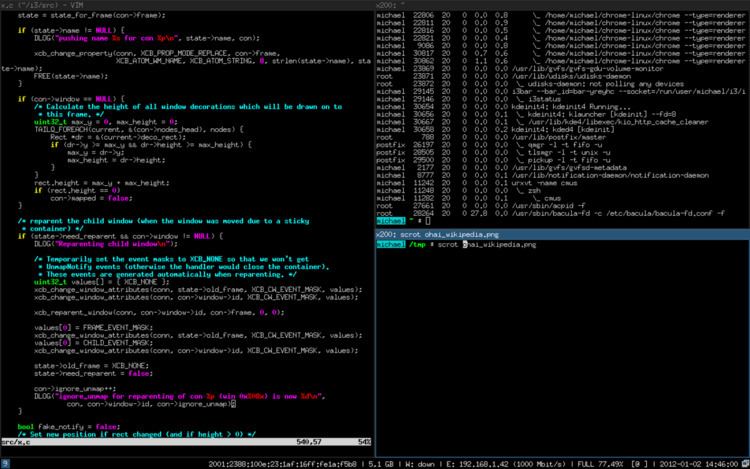Original author(s) Operating system | Written in C | |
 | ||
Initial release March 15, 2009; 8 years ago (2009-03-15) Stable release 4.13 / November 8, 2016; 4 months ago (2016-11-08) Repository git://github.com/i3/i3 | ||
i3 is a tiling window manager designed for X11, inspired by wmii, and written in C. It supports tiling, stacking, and tabbing layouts, which it handles dynamically. Configuration is achieved via plain text file and extending i3 is possible using its Unix domain socket and JSON based IPC interface from many programming languages.
Contents
Like wmii, i3 uses a control system very similar to vi. By default, window focus is controlled by the 'Mod1' (Alt key/Win key) plus the right hand home row keys (Mod1+J,K,L,;), while window movement is controlled by the addition of the Shift key (Mod1+Shift+J,K,L,;).
Design goals
Compared to other tiling window managers
Floating pop-up windows
Even though i3 is a tiling window manager, specific windows such as password pop-ups are not displayed as new tiles by default: they are stacked in front of tiled windows. These floating windows can be moved and resized freely, just like in popular desktop environments like GNOME or KDE.
Floating windows are intended by the authors of i3 to be used for pop-up windows only.
